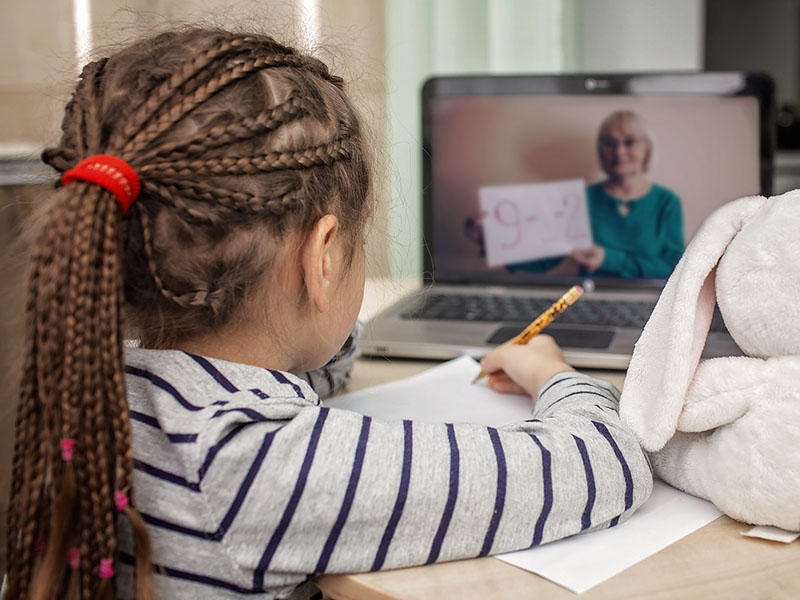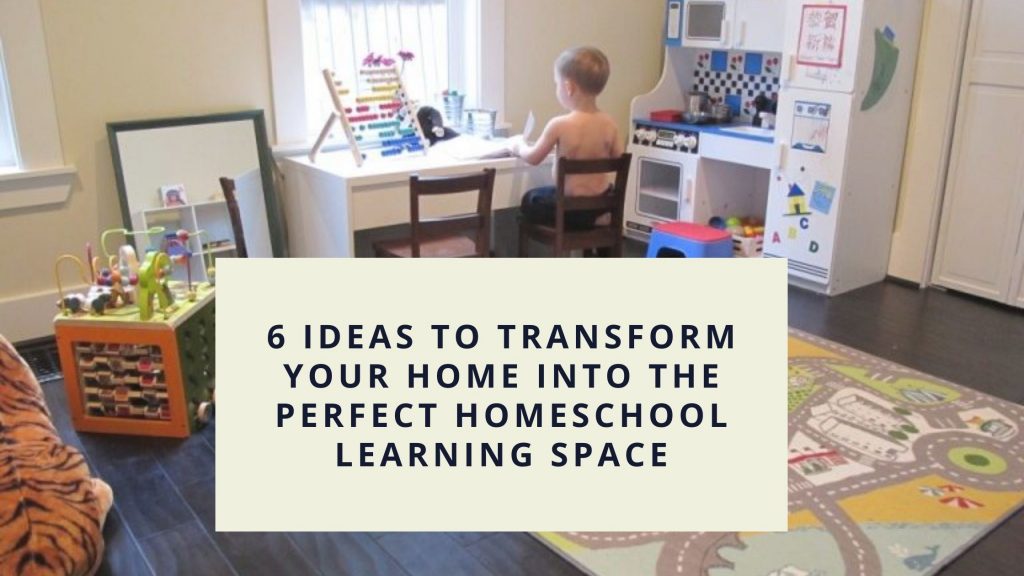
As of writing this, most students are nearing the halfway point in the fall semester. Almost every school district across the nation is doing something different for the 2020-2021 school year. Because of the varying effects of the pandemic in different places, some schools have tentatively opened their campus up for in-person classes. Others have decided to go the remote learning route and the rest are even experimenting with StudyPods.
So to help you and your child adjust to this tumultuous time, here are seven ways to make remote learning stress-free.
We’re separating this list on the basis of two things. Firstly, we’ll be discussing what you can do to ensure your child is safe and responsible online during this remote learning period. Secondly, we’ll be explaining what might help your child feel as comfortable as possible while learning online.
Things to Do as a Parent:
It goes without saying that your child will be spending an increasing amount of time online. They might be getting their first device or use a loaned Chromebook or iPad from the school district. Regardless, with virtual learning, it becomes more important than ever to protect your child online.
How do you do that? We’ll be honest, it will take some effort on your part. We get the reading safety policies or setting up parental controls may not feel like a priority in the pandemic. However, young learners are particularly susceptible to the dangers of the internet unless parents take the following precautions.
1. Teach Your Child About Internet Safety
Your parents only had to tell you not to talk to strangers. You have to tell your kids that people may not be who they say they are online. Right now, hackers and scammers are taking advantage of the world moving largely online. As a result, it is more important than ever to talk about internet safety with your child. Some topics to touch upon:
- Never share personal information on social media (to friends or to strangers) like usernames and passwords.
- Blocking pop-ups and ads. Help them download anti-virus software and ad blockers as required.
- If you have an older child with a phone, help them set up two-factor authentication.
- For younger children, consider setting up a password manager to help them keep their strong passwords straight.
- What to do if their friend or they themselves get hacked
- What to do if their friend or they themselves are getting bullied online
- Email scams and text message scams
- Getting parental permission before browsing an unfamiliar website
It might also be prudent to tell younger children that buying apps from the app store requires real money. This could save you from a surprise bill!
Also Read: Keeping Learning Alive in the Pandemic with Online Learning Pods
2. Separate School and Personal Time
Best way to do that? Create separate email accounts for your child—one for school and one for their personal use. Here’s why:
- Your child’s school district may be collecting data on what your child is doing on their school account. Some districts might even sell anonymized data about your child to get free or reduced-cost access to a particular product.
- If your child is too young to be able to create an email account themselves, use Google Family Link to create their account under yours. You’ll be able to add parental controls on what they can and cannot do on a device where they are logged into, like what ads they get to see and what apps they can download.
- Creating separate accounts is also a great way to create a distinction between work and playtime for your child. You should ensure that your child still gets essential reading, writing, and math practice during this learning period. Setting screen-limits for personal accounts can help you get this done.
Things to Do With Your Child:
Now that you have implemented some basic internet safety activities, we can discuss how to make remote learning as seamless as possible on your child’s side of things. You know your child so adjust these general activities as you see fit!
1. Set Up a Designated Work Environment

A focussed workspace leads to great success!
It will be very tempting for your child to attend their online classes from the bed. At the same time, such a practice can lead to kids falling asleep in class or falling behind because they’re just not motivated to learn or work from a place of relaxation.
Instead, create a workspace in your house where your child can stay focused on what they’re learning or homework that they’re completing. This can be a little nook in the living room or a work area in the study. Whichever it is, follow some of the following guidelines to set up a great work station:
- Try to get them as far away from their bed as possible! Let their bedroom be a safe space from all their school-related stress.
- Choose a spot with a lot of natural light! For one, it’ll help them feel confident when they are lit up in their online classes. It’ll also keep them alert and productive. More importantly, natural light mitigates the effects of sitting in front of the screen for most of the day.
- Help them get organized. Whether that means having a shelf in their workspace that has all of their workbooks and homework folders sorted or color-coding pens to take notes should be up to your child.
- Make sure they’re in a spot with minimal background noise or distractions.
Take this up as a creative project that your child can use in the years to come to be productive! Learn more from our tips on how to create the perfect homeschool learning space.
Suggested Reading: 6 Ideas to Transform Your Home into the Perfect Homeschool Learning Space
2. Reflect on the Past Year and Make Goals for this one
Unfortunately, a lot has happened since March. It’s already difficult for fully-grown adults to process everything they’re dealing with, can you imagine how children are feeling at the moment?
It is really important for you to have an open and honest discussion with your child about the last year. Ask them:
- How did the sudden shift to virtual school last year make them feel?
- How do you feel about the pandemic now?
- What was one good thing about staying at home?
- What do you wish you would have done?
Tell your child how you feel about it, too! Emphasize that the way they’re feeling is valid. Identify things both of you would like to do better this school year and make some short-term and long-term goals.
3. Help Them Socialize Safely

Remote learning can feel awfully isolating. Your child might be missing a friend from class or craving group activities with their peers.
Reach out to fellow parents and students to set up virtual study dates or weekly meet-ups at the park (while abiding by social distancing rules!). Ask your child’s teacher to facilitate more group activities to help your child maintain their bonds with their friends and classmates.
We also suggest hiring an online tutor, perhaps an older student, to act as a mentor and as homework help for your child. Kids are used to having multiple resources to go to for help. Right now, that’s being confined to their parents and their teachers. They could use some interaction with their classmates and older students at this point!
Suggested Reading: 5 Things Parents Must Do to Build Social Skills in Children
4. Get Active
Staying at home and increasingly sitting for long hours in remote learning can make it hard to get exercise or physical activity each day. Students no longer have recess or even passing periods to get to their next class. Some schools are attempting PE online but that has varied results.
We sincerely suggest that you prioritize exercising with your family, This can be anything from doing yoga in the morning, following a family workout video, walking the dog, or spending the afternoon playing backyard soccer. This is especially important since increasing physical fitness and activity improves academic performance!
5. Work on a Passion Project!

We have a lot more time on our hands now that we’re all at home. A great way to get your child back into the headspace for school is to do something meaningful and productive at that time. Some ideas include contributing to a community garden, developing a website, or publishing their art online.
We suggest you browse our ideas on the 7 new skills kids can start learning while staying-at-home.
Read: Learn these 7 new skills during Coronavirus Quarantine
If your child has always wanted to master a particular skill, now is the perfect time to do so! Consider enrolling them for online lessons in the hobby or skill of their choice. Talentnook provides free trial lessons for a variety of skills and talents taught by experienced tutors.
Check out Talentnook Online Lessons here!
